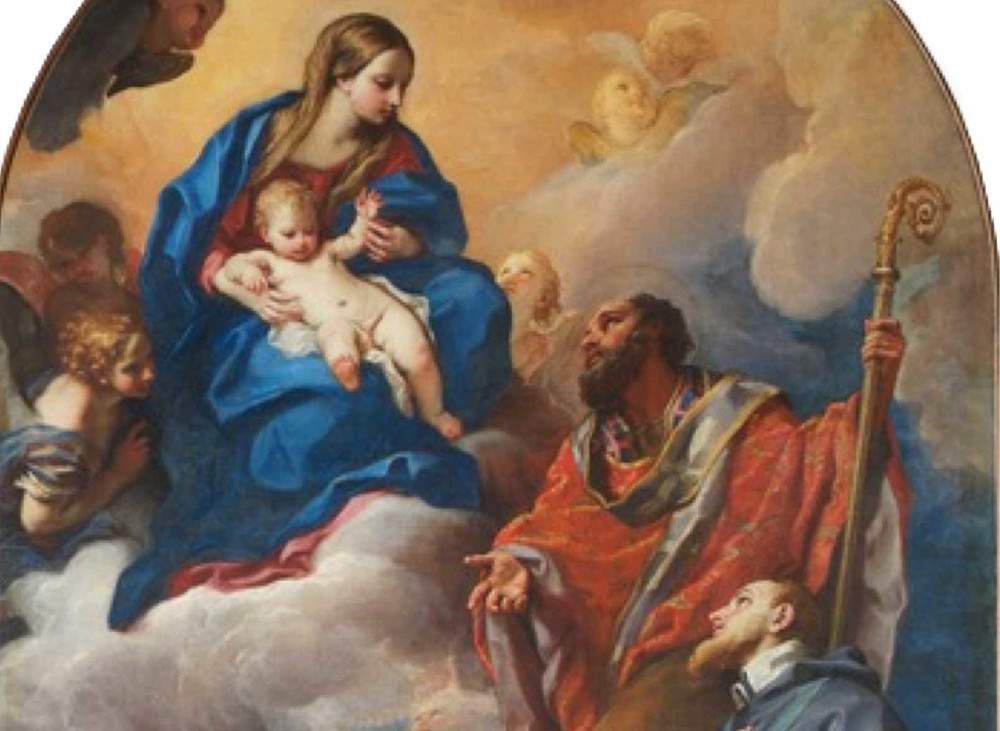Ancona hosts an exhibition on Carlo Maratti and his communication strategies
In anticipation of the four-hundredth anniversary of the birth of Carlo Maratti (Camerano, 1625 - Rome, 1713), which will be celebrated in 2025, Ancona, too, after the Camerano stage, pays tribute to the artist from the Marche region, with an exhibition that ranges from paintings to drawings and prints. The intent is to acquaint the general public with Maratti’s artistic activity, the way he was able to promote himself and the important influences he had on the artistic production of the following centuries, succeeding in the difficult task of reconciling the two opposing artistic trends of the time: the classicism mediated by Raphael and the magniloquence of the Baroque. In fact, the traveling exhibition Carlo Maratti. Communication Strategies and Promoting His Own Work, curated by Stefano Papetti, at the Pinacoteca Civica “F. Podesti” in Ancona.
The exhibition will bring together 29 autograph works including paintings, drawings and prints to address for the first time this non-marginal aspect of his activity, namely his ability to rework the same motifs to satisfy different patrons, managing to give new form to the contents of the iconographic tradition, and becoming the subject of replicas that came out of his own workshop (somehow authorized by himself) and engravings that made it possible for his images to be circulated.
The exhibition is enriched by an autograph drawing preserved in Osimo, preparatory for the altarpiece Madonna with Child and Saints that is located in the Pinacoteca itself and around which the entire exhibition revolves. This is the first time that the drawing has left Osimo to be placed in comparison with the pictorial work to which it gave rise: an opportunity to observe from life the care that Maratti put into the preparation of the canvases, especially when it was necessary to obtain the client’s approval before starting to paint.
The Madonna and Child with Saints is a fundamental painting in Maratti’s artistic journey: it was made in 1672 when the artist briefly returned to the Marche, his homeland, after achieving Roman and international success, and represents the definitive achievement of his style and art, a skillful composition that reinterprets in an original and personal way what Maratti had certainly observed in the canvases of great masters such as Titian.
“This altarpiece sounds strong, sincere, without affectation,” writes Stefano Zuffi in his catalog essay. “Maratti asserted that it is more difficult to paint in drapery than in the nude: here, no doubt, he demonstrates his skill in the abundant fabrics that cover the three saints and the Madonna, with folds and coils, decorations and colors, embroidery and lacework of spectacular effectiveness.”
The exhibition aims to tell the story of how the artist created a unique organizational model of his studio aimed at promoting himself and his artistic activity in order to make his creations known to a wide audience of artists and enthusiasts. Replicas of his most successful canvases were executed by his closest collaborators, there were numerous autograph variants, and prints of reproductions circulated, enticing collectors and patrons to purchase ready-made works or commission new ones.
Hours: Tuesday to Friday 10 a.m. to 1 p.m. and 4 to 7 p.m.; Saturday, Sunday and holidays 10 a.m. to 7 p.m. Closed Mondays.
Image: Carlo Maratti, Madonna and Child with Saints Nicholas of Bari, Francis of Sales and Ambrose, detail (Ancona, Pinacoteca Civica “Francesco Podesti”)
 |
| Ancona hosts an exhibition on Carlo Maratti and his communication strategies |
Warning: the translation into English of the original Italian article was created using automatic tools. We undertake to review all articles, but we do not guarantee the total absence of inaccuracies in the translation due to the program. You can find the original by clicking on the ITA button. If you find any mistake,please contact us.





























